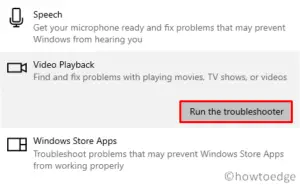BitLocker is a very advantageous feature which is designed to protect data and allows you to encrypt the entire system drive. This encryption feature is used to safeguard your documents, pictures, music, and other data from unofficial access if your device gets stolen or lost. In this blog post, we will let you learn a few easy steps to suspend BitLocker to perform system changes in Windows 10.
In addition to this inclusive feature, BitLocker is very helpful particularly for computing devices like – mobiles, laptops, tablets, and others. However, it also has a few shortcomings by which if you change hardware or upgrade to a new version of Windows 10, you may encounter a major issue. It occurs as BitLocker will consider that the device is being interfered with in order to cause damage or make unauthorized alterations. However, you can escape from this circumstance by suspending BitLocker on a system drive with the help of three different ways which we have explained here.
RECOMMENDED: How to fix login failed error 0xC0210000 in Windows 10
Methods to suspend BitLocker to perform system changes in Windows 10
Here are the following steps to suspend (and resume) BitLocker to perform system changes in Windows 10-
Using Control Panel
To suspend BitLocker using Control Panel on Windows 10, use these steps-
Step-1: Press Window + R hotkey to launch Run dialog.
Step-2: In the void, type control panel. Press Enter key and let open the Control Panel on your device.
Step-3: Here, a new window will launch containing all the items of Control Panel. Navigate to the address bar and click on the Control Panel.
Step-4: Locate System and Security and thereupon, on the right side, hit BitLocker Drive Encryption.

Step-5: On the following page, click on the Suspend protection option.

Step-6: Click the Yes button.
When you finish the above procedure, the BitLocker protection will get disabled for a time without decrypting the data. Accordingly, at that instant, you would perform firmware and system updates easily without problems. On performing these changes, you can start resuming encryption to retain your files secured at any time.
Resuming BitLocker protection with Control Panel
To resume the BitLocker protection on your device, use the following steps-
- Open Control Panel.
- Go to the System and Security. –> BitLocker Drive Encryption.
- At last, hit the Resume protection option.
- As an alternative option, just restart your device. On opening it, the BitLocker protection will resume automatically.
Use PowerShell
You can also perform the above procedure with the help of commands in PowerShell. Follow the below instructions to do it-
- Click on the Start button and type PowerShell.
- Select the result from the list. Right-click on the same and select Run as administrator option.
- A UAC will prompt, simply click on the Yes button.
- On the next screen, type the following command to suspend BitLocker.
Suspend-BitLocker -MountPoint "C:" -RebootCount 0

- Press the Enter key.
In the above command, the -RebootCount lets you conclude how many times your system can reboot before BitLocker will re-enable automatically. Here, you can use values from 0 to 15. Moreover, 0 is used to suspend BitLocker until you resume the security manually.
Once you finish the above procedure, the BitLocker will get disable temporarily unless you specified the reboot count option. In this circumstance, the protection will re-enable automatically after the number of restarts that you preferred.
Resuming BitLocker with PowerShell
To resume Bitlocker automatically, implement a new firmware update on your device and follow the steps given below-
- Open PowerShell as an administrator with the help of steps that we have already explained on this page.
- Type the following command:
Resume-BitLocker -MountPoint "C:"
- Press the Enter key.

When you perform the steps, the encryption protection feature will again activate on your device.
Through Command Prompt
As an alternative method, you can also use Command Prompt to disable BitLocker on Windows 10-
- Click on the Cortana and type cmd. Locate Command Prompt from the list and then make a right-click on the top result.
- Select Run as administrator option. A UAC will prompt on the screen, click on the Yes button.
- Subsequently, type the following command beside the blinking cursor –
Manage-bde –Protectors –Disable C: -RebootCount 0

- In the above command, the -RebootCount lets you conclude how many times your system can reboot before BitLocker will re-enable automatically.
- Here, you can use values from 0 to 15. Moreover, 0 is used to suspend BitLocker until you resume the security manually.
Once you complete the above steps, your device will temporarily stay without encryption protection to perform system changes.
Resuming BitLocker using Command Prompt
On implementing these changes, you can re-enable BitLocker protection. There are the following steps given below to use with Command Prompt-
- Run elevated Command Prompt as we explained earlier in this article.
- On the following screen, type the following command –
Manage-bde –Protectors -Enable C:
- To resume BitLocker, now press the Enter key.
On completing the above steps, BitLocker will resume keeping the system drive fully encrypted.



